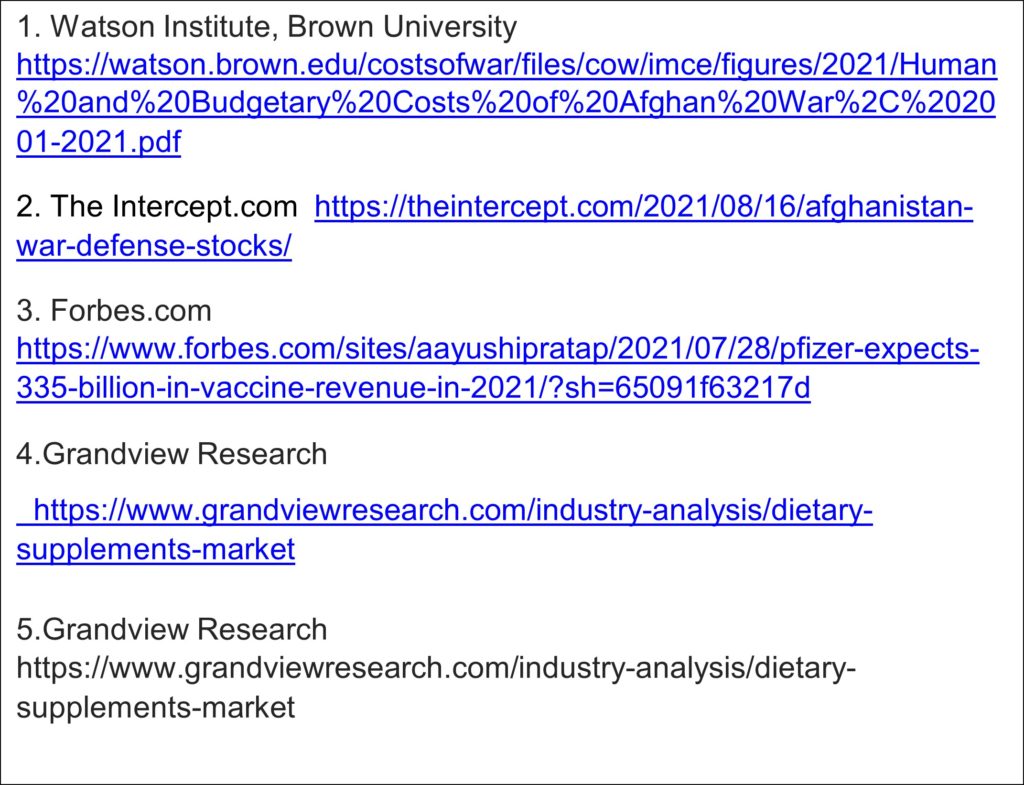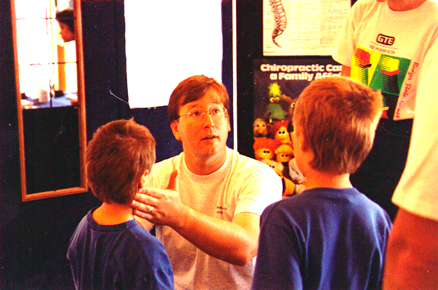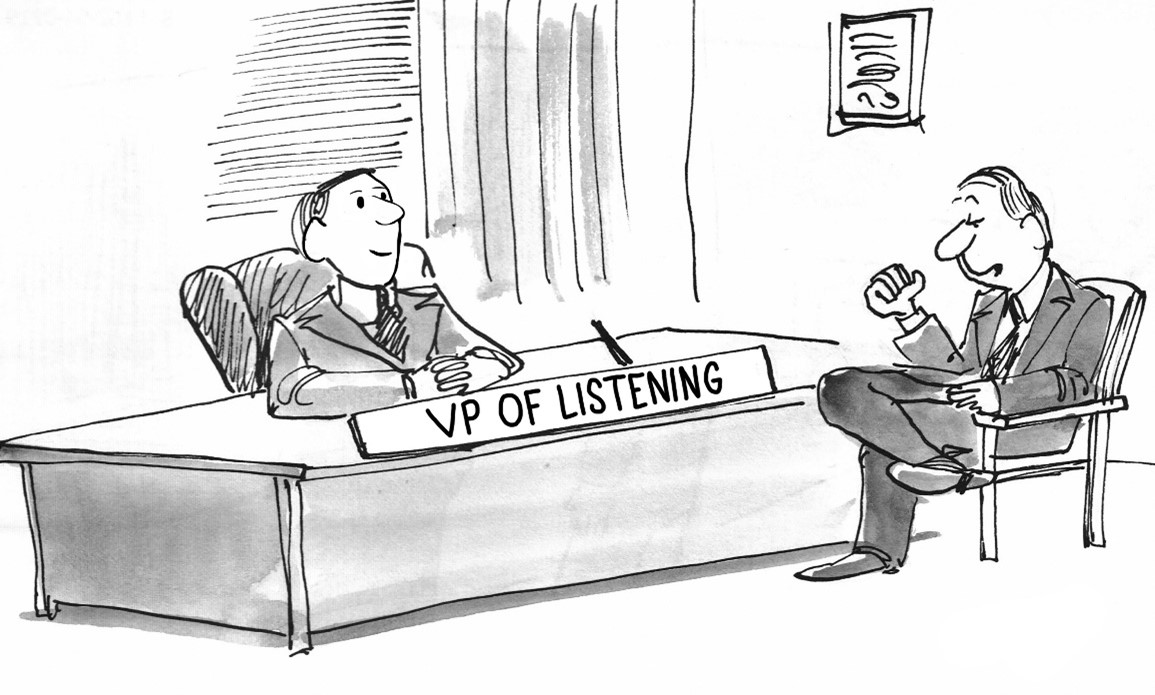
You can try to sell ice water to Eskimos or sandbags to desert dwellers, but you would go broke.
You need to offer your services to those specific people who would want them. The more you do this, and the better you do this, the larger your customer volume will be and the more profitable your business will become.
So, what is your market? Who are those people who want to see you or are looking for what you have to offer?
It is people who want to relieve a health issue more naturally.
And this market is growing and certainly becoming more motivated.
You wouldn’t think it, though. The media would have you believe that everyone is spending their time in drug stores, behind masks, maintaining social distancing.
The governmental “agencies,” looking out for us, are warning us about new “variants” that are “surging.” But, what is apparent is what is NOT talked about!
What is that you ask? Oh, that would be Health!
Do you hear them talk about better food, more exercise, more sunshine, better nutritional support, or natural health care services? How about proven medicines already in the public domain? I don’t think so.
Why not? Well, I don’t know, it might have something to do with …money.
This may not seem marketing-related, but I think that it is essential to examine the environment that your market is dealing with. The people who want natural solutions to their health issues, those that you want to reach out to, find themselves in a sea of conflicting, even frightening, messages.
We can look at the ongoing debacle in Afghanistan. Scared civilians falling out of airplanes after we spent over two trillion dollars and the lives of 47,000 civilians over in Afghanistan. Why? Well, money. (1)
Was the “war” a failure? Not for the stock market, especially for Lockheed Martin, whose stocks increased 1,236 percent since 2001. Other weapons companies like Raytheon, Boeing, Northrop Grumman, and others all saw their stock climb. (2) So, the Afghan war was a success – for these companies and their CEO’s and stockholders. Selling the idea of stopping terrorists was a profitable campaign – for some.
Could there be a parallel scenario with drug companies? Could the government be working at the behest of another industry besides the Military-Industrial Complex? Well, for its COVID vaccine alone, Pfizer expects to generate 33 billion this year. (3)
In both cases, it was the marketing use of FEAR that justified enormous changes in our lives. Fear of terrorists, fear of a virus.
But here’s the thing: You can scare all the people some of the time, and some of the people all the time, but you cannot scare all the people all of the time.
There is a large percentage of the population that want better health naturally and do not necessarily buy into fear-based propaganda. In fact, the constant omission of health solutions amidst the drumming for drug solutions may just motivate health-oriented people to more staunchly pursue better health!
Look at the sales of organic food. As you can see from the graph below, organic food sales have been on a steep uptrend. Sales of organic food were 16 billion in 1999, and has been rising continuously, reaching 106 billion in 2019. (4)

And here is a more recent chart of health supplements and their expected rate of growth (5):

These consumers want better health. They don’t want poison. Big Tobacco was clever with its marketing strategy and fought hard, but it eventually lost. Monsanto (Bayer) has worked every angle, but it too is slowly losing its fight to keep Roundup, which contains a cancer-causing chemical called glyphosate, in the marketplace.
Though not broadly promoted, Big Pharma companies have been fined billions for their illegal activities, including killing people (Merck, Vioxx).
Your market is right there, with you. They may not all be speaking out, but they know, or at least sense, that something is not right. And, they want better health.
Almost every office we work with has been seeing their numbers rise over the last year or two. Why? I want to think our coaching and new systems have something to do with it, but the fact is, your market is hungry for trustworthy health solutions and providers.
You don’t have to froth at the mouth against Big Pharma, but you certainly can stand up for natural health. This is your province. You own it, and always have. So let your community know that you are on their side for health, natural and wholesome, without additives. Peer reviewed for thousands of years!
They are looking for you. Just let them know where you are, who you are, and what you can do for them. (You can also add, WHY you do what you do!)
Here are few steps to better engage your niche – and help more people:
- Position yourself as a natural healthcare office, clinic, or facility. “See us to feel better and be healthier — naturally!”
- Celebrate your patient and client successes. Be happy with your patients. They may underappreciate their health successes. Most do, in fact. Be their cheerleader and give them positive, but genuine, support for their health improvements.
- Get their OK, in fact encourage them, to Share the Care.
- Patient testimonials published on all media – website, social platforms, even YouTube.
- A homemade monthly newsletter from you.
- Case histories you talk about
- Staff successes! Patients look at how cool the office is. If the team says it’s great, well, it probably is!
- Take time to study your market and the environment it is dealing with. Yes, this will take time. But you are a professional and a leader. To educate others, you need to be educated yourself. Study the science, get the verifiable stats, the first-hand reports of others, and draw your conclusions. No one is sitting out this game. You need to be prepared.
There are many different methods you can use to tell people where you are, who you are, and what you can do for them. But know that they are out there, people who want healthier solutions to their health issues. This is your niche.
And they are looking for you right now.
Seize the week and help more people.
Ed

And buy my book – The Goal Driven Business. Read and use it. It will help take you to your next several levels!

Download the PDF [HERE]











 Used to be a popular TV program called Cheers back in the 80’s. It was modeled after a bar in Boston with the same name. As a situational comedy, Cheers presented a familiar group of customers who came to the bar to have a drink, but also to relax, socialize, and have good cheer.
Used to be a popular TV program called Cheers back in the 80’s. It was modeled after a bar in Boston with the same name. As a situational comedy, Cheers presented a familiar group of customers who came to the bar to have a drink, but also to relax, socialize, and have good cheer.


 “Call your mom!”
“Call your mom!”

 The cause of almost all relationship difficulties is rooted in conflicting or ambiguous expectations around roles and goals. Stephen Covey
The cause of almost all relationship difficulties is rooted in conflicting or ambiguous expectations around roles and goals. Stephen Covey








